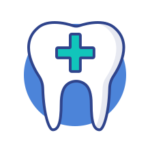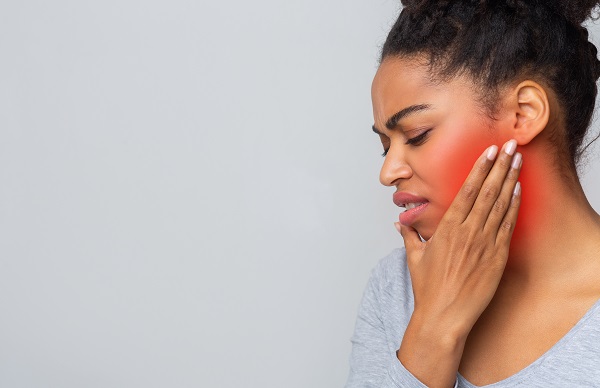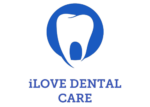Welcome to iLOVE DENTAL CARE

Temporomandibular Joint Disorder(TMJ/TMD) In
Westwood
The temporomandibular joint (TMJ) has the same operating principle as a sliding hinge, helping to connect the jawbone with the skull. Temporomandibular joint disorder (TMD) causes pain in the temporomandibular joint and the muscles that control jaw movement.

What is temporomandibular joint disorder?
The cause of temporomandibular joint disorder is still not exactly determined. TMD pain can be the result of a combination of factors such as genetic factors, arthritis, or trauma to the jaw area. Some patients with temporomandibular joint disorders may have a tendency to frequently grind their teeth, but this does not mean that someone with a habit of grinding their teeth will cause TMJ.
In most cases, TMD-related temporomandibular pain is temporary and can be relieved with appropriate care or conservative treatment. Surgery is often indicated last when conservative measures are ineffective, but some patients with temporomandibular joint disorders may benefit from this treatment.
Signs suggestive of temporomandibular joint disorder
Common symptoms of this syndrome include:
Pain in the position of the jawbone; Temporomandibular pain on 1 or both sides; Pain in and around the ear; Difficulty chewing or pain when chewing; Pain in the entire face; Stuck or locked temporomandibular joint, the patient has difficulty opening or closing the mouth; A clicking sound occurs when you open your mouth or chew; Sudden difficulty chewing or biting, discomfort when the upper and lower teeth do not match; Swelling on one side of the face; In addition, people with TMJ may experience toothache, headache, neck pain, dizziness, hearing problems, shoulder pain, and ringing in the ears.
Causes of temporomandibular joint disorders
The temporomandibular joint acts as a sliding hinge. The bones of the temporomandibular joint can move smoothly because they are covered by cartilage and are separated by a small disc (which absorbs force).
Common causes of TMD are injuries to the jaw, joints, or muscles of the head and neck. Besides, there are other causes of temporomandibular joint disorder including:
Habit of grinding teeth inadvertently creating a lot of pressure on joints; Abnormal movement between the condyle of the jaw and the disc portion of the temporomandibular joint; Arthritis, cartilage damage; Nervous tension leads to facial muscle tension or teeth grinding; The part of the temporal disc that is eroded or moved out of its normal topology. However, there are many cases where the cause of temporomandibular joint disorder is not clear.
Diagnosis of temporomandibular joint disorder syndrome
Many other conditions can cause symptoms similar to TMD such as tooth decay, gum disease, problems related to the facial sinuses or arthritis. To determine exactly, the doctor will discuss with the patient about the medical history and then perform the appropriate examination measures.
The doctor will examine the condition of the temporomandibular joint and ask if the patient has signs of temporomandibular pain, listen to a click or a sound similar to grinding teeth when the joint moves. At the same time, the doctor needs to record the jawbone activity and check for locking or jamming when the patient opens or closes the mouth. In addition, the doctor will check for possible biting and problems with the muscles of the face.
Some imaging methods help diagnose temporomandibular joint disorders:
Facial X-ray helps to observe the condition of jaw bone, temporomandibular joint and teeth; Magnetic resonance imaging: The image on the MRI film helps to detect whether the temporomandibular disc is in the correct position when the jawbone moves or not; Computed tomography (CT) scan to document the bones of the temporomandibular joint.
Home remedies for temporomandibular joint disorders
Patients can apply home remedies to relieve TMD symptoms under the guidance of a doctor, including:
Using over-the-counter drugs: Non-steroidal anti-inflammatory drugs (NSAIDs) to relieve symptoms muscle swelling and pain; Cold compress: The patient uses an ice pack to apply on the side of the face with pain in the temples for 10 minutes; Do a few simple jaw stretches. Then apply a warm towel for 5 minutes; Eat soft foods, add yogurt, mashed potatoes, cheese, soups, eggs, fish, fruits, cooked vegetables, beans and whole grains to your daily menu. When processing, food should be cut into small pieces to limit chewing. Minimize foods that are too hard, crunchy, chewy or foods that are too thick and require opening the mouth wide; Limit jaw movement, yawning and chewing continuously. Be careful not to scream, sing, or do anything that causes your mouth to open wide; Do not rest your chin on your hand or hold the phone between your shoulder and ear; Try to keep your teeth apart to reduce pressure on the jawbone. Patients with temporomandibular joint disorder can control bruxism by placing the tongue between the two teeth;
What Our Patients Are Saying
iLOVE DENTAL CARE
Open Hours
- Monday: 8:00am - 5:00pm
- Tuesday: 8:00am - 5:00pm
- Wednesday: 8:00am - 5:00pm
- Thursday: 8:00am - 5:00pm
- Friday: 8:00am - 5:00pm
- Saturday: 8:00am - 3:00pm
- Sunday: Closed
